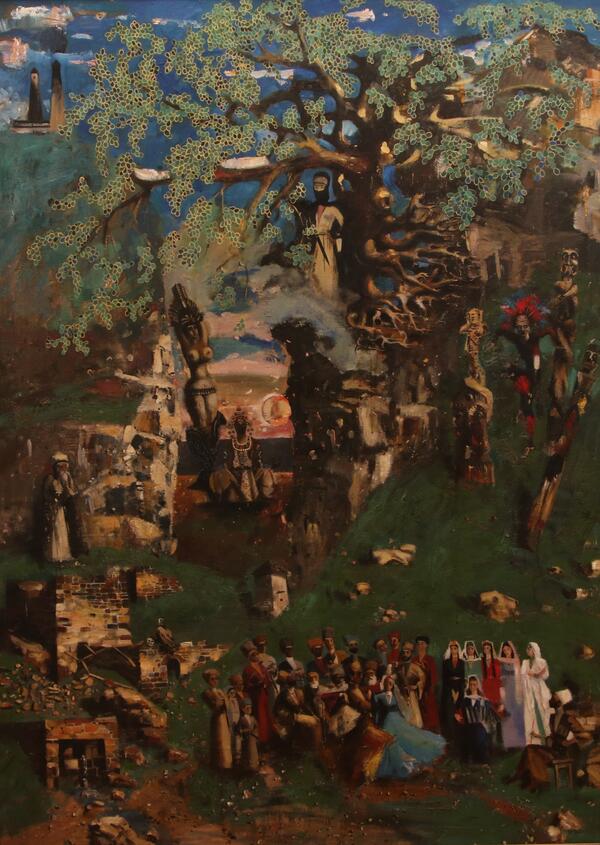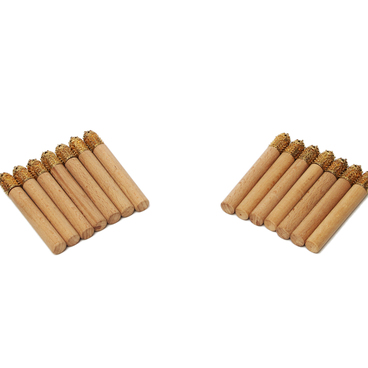Murat Polonkoev is a painter, sculptor, master of decorative and applied arts. He studied at the department of monumental painting of the Repin Institute of Painting and Sculpture in Leningrad.
Monumental or mural painting usually means large-scale artworks: it involves painting directly on the walls of buildings and other large structures. This type of art includes frescoes, mosaics, and various street art. Mural artists often generalize imagery, create simple compositions and silhouettes that are easy to recognize. Murat Polonkoev developed his style and drew inspiration from the techniques used in mural painting.
The large-scale painting ‘The Survival’ is one of the artist’s masterpieces. He dedicated it to the centuries-old traditions of the Ingush people. Against the background of the mountainous Ingushetia, the master depicted images from the history of Ingushetia: ancient gods, ancestral towers, ancient costumes and rituals.
In the lower part of the painting, Polonkoev depicted wedding festivities. However, there is no bride in a white dress on the painting — in Ingushetia, the bride and groom do not see each other for the first two days of the wedding. The bride is taken to the groom’s house, where she must undergo several ceremonial rituals with his family, while the groom celebrated separately in a house of his relatives or friends.
Special guests sit on the chairs — the musicians. On the right, the painter depicted a musician with a dhol (a Caucasian drum) and a female squeezebox player in a blue dress. Good squeezebox players were always valued in the Caucasus, they were honored guests at any wedding. Interestingly, according to a tradition, when they were invited to dance, they did not stop playing.
The master accurately conveyed other features of the ceremony: men in hats stand on the left, women in festive outfits — on the right. In Ingush etiquette, men during ceremonies, including dances, should be on the left side.
Ancient pagan beliefs are also represented on the painting. Before the adoption of Islam, the ancestors of the Ingush worshipped deities, the supreme god was Dyala, the father who created the Earth in 10 days. The most important gods were Sela — god of thunder and Gela — god of Sun.
In the middle plane, to the left of the tree, the artist depicted ‘Khi-nana’ — ‘Mother of Water’. It was a half-woman half-fish creature. The upper half of her body is human, and the lower half is a fish tail. It was believed that Khi-nana makes the waters flow without resting either day or night, and only half an hour before dawn she falls asleep for a moment. At that moment, the water freezes and thickens. Khi-nana is a kind spirit who sympathizes with people and warns them about disasters. The Ingush believed that she appeared in places where a misfortune was bound to happen, and wistfully sang songs similar to lamentations of the dead.



